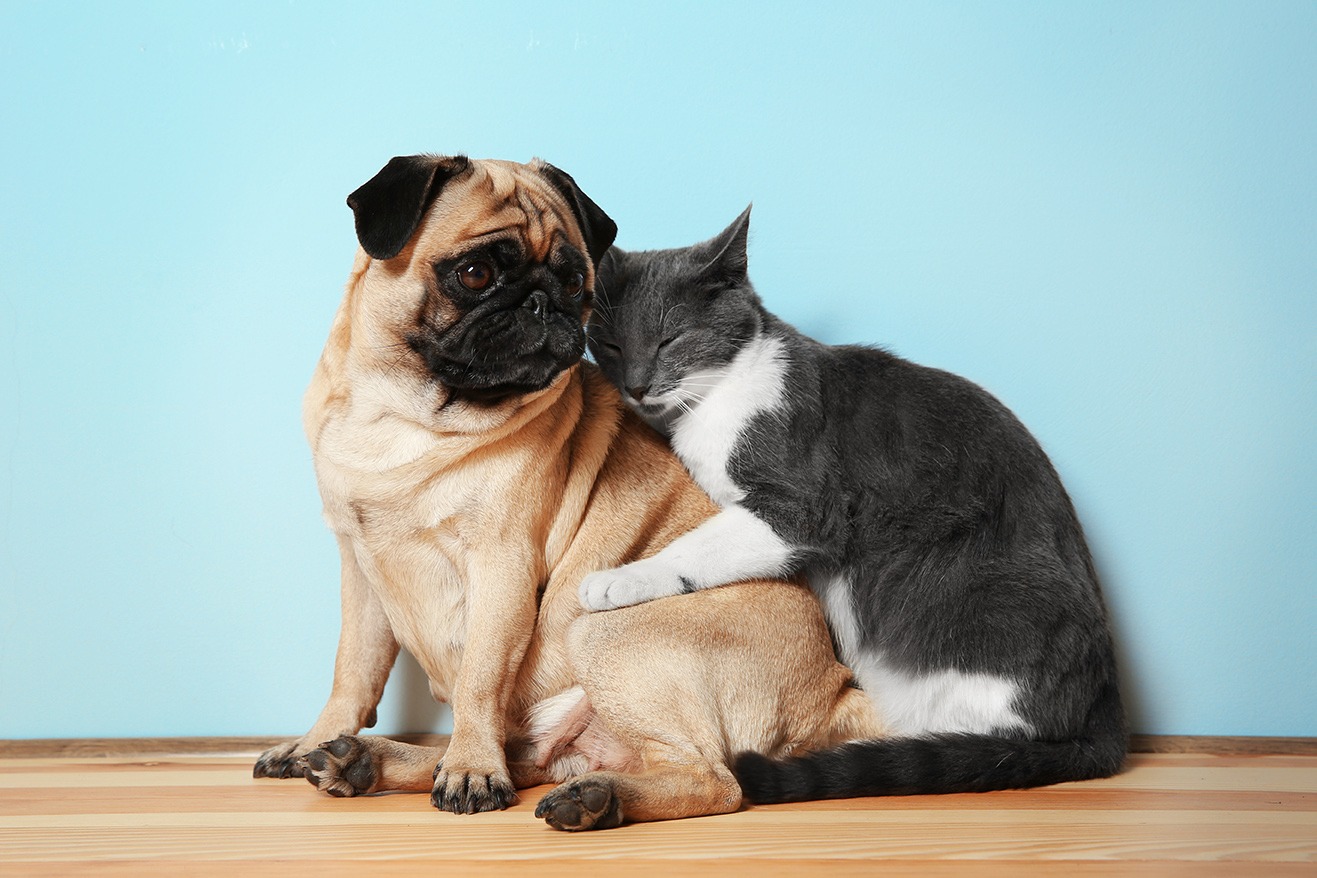Cats and dogs which are raised together from a young age can live in perfect harmony, and will learn how to tolerate and live with each other.

However, if a cat is already a part of the household and a dog is brought in, it’s important to take the right precautions to ensure both pets are comfortable and happy.
Differences between cats and dogs and mixing personality types
Certain breeds of cats and dogs don’t necessarily get along better than others, but it’s rather the personalities of the pets that should be taken into account. For example, a dog which is very territorial will most likely not be a good fit in a household with a naturally nervous cat.
While it’s not always clear what the pets’ personality will be, it’s important to have a backup plan, or evening finding a way to keep them separated for the long term. If you’re thinking of adopting or rescuing a pet from a shelter, it’s important to try and find out any information on the pet’s personality beforehand, so you have an idea before committing.
Preparing your home – creating individual dog and cat friendly areas
It’s important to ensure the pet has a safe area or space in the home which the new pet won’t have access to. It’s key to move all the residential pet’s essentials to this area, such as food, water, a bed and somewhere to go to the toilet. The most confident of pets could be disturbed by a new pet, so it’s important to create an individual cat or dog area where they can go to feel safe. Introducing a stairgate will help to separate a cat and a dog and will give both pets the opportunity to see and smell one another. Cats in particular love to sit, rest and hide in high areas, which is helpful when introducing a dog into the household.
First introductions
When first introducing a cat and a dog, having the stairgate prepared will mean you can put your dog on a lead behind it, with some tasty treats at the ready for good behaviour. Cats like to suss out a dog at their own leisure which may take some time, but it is important the cat does this in its own time and they are not forced to come closer to the dog, which may lead to scratches or bites.
Dogs should not run after the cat, bark or become too excited, as this can scare the cat and may ruin the process of introducing them both, although this is subject to the personality of the pet. Use treats to try and calm the dog down and distract them. Plenty of distance is vital if you are introducing a kitten to a dog to avoid either pet being overwhelmed.
How long does the process take?
The pairing process for cats and dogs can usually take from a few days to several weeks and in some rare cases, it never works out. Supervision is key, as what may seem to be harmful playing between a cat and a dog, could quickly have a predatory outcome.
Tips on relaxing excited dogs
Some dogs have overly excited personalities or show behavioural issues, making it difficult to introduce a cat or kitten into the household, or vice versa. Bob Martin Stay Calm Oil for dogs and puppies containing Valerian, Camomile and Ginger oils is a highly effective, daily supplement which naturally relaxes and calms timid or overly-excited dogs. The oil helps to ease stress in dogs displaying common behavioural issues such as excessive barking, chewing, shaking or generally being unsettled. Given regularly, the easy to administer solution will not only calm your pet, but also leave them relaxed and content and easier to assimilate.

